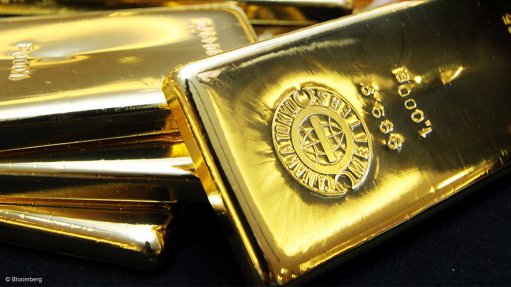
Photo by: Bloomberg
TORONTO (miningweekly.com) – The world’s largest gold producer by output Barrick Gold has cut its dividend, lowered or deferred capital spending plans and will continue with noncore asset divestures as it seeks to repair and strengthen its debt-heavy balance sheet.
The Canadian company had slashed its quarterly dividend by 60%, from $0.05 a share to $0.02 a share, in an effort to increase financial flexibility in light of a muddled gold market outlook.
Barrick would also start a formal process over the next several weeks to sell various noncore assets in Nevada and Montana, including Bald Mountain, Round Mountain (50% interest), Spring Valley (70% interest), Ruby Hill, Hilltop and Golden Sunlight.
Further, the company announced that it would cancel or defer spending that did not meet its capital allocation objectives, which included the ability to meet a hurdle rate of 15%. In the second quarter, the company had identified $240-million in reductions that had now been removed from its spending plans.
Capital expenditure (capex) for 2015 was now expected to range between $1.6-billion and $1.9-billion, 20% lower than 2014.
Exploration expenditure was pared down by 17% to between $180-million and $220-million, with 65% allocated to brownfield exploration and 35% to greenfield projects, namely on the company’s newest discovery Alturas, on Chile's prolific El Indio belt.
Barrick was looking to cut company-wide spending by $1-billion in anticipation of potentially weaker prices in the second half of 2015, increasing this target to $2-billion by the end of 2016. These reductions would come from operating expenses, capital spending and corporate overhead, of which it had already identified $1.4-billion in potential opportunities to date.
Meanwhile, reflecting the divestiture of the Australia-based Cowal mine and 50% of Barrick (Niugini), full-year 2015 gold output was now expected to range between 6.1-million ounces and 6.4-million ounces, down from previous estimates of between 6.2-million ounces and 6.6-million ounces, at all-in sustaining costs (AISC) of $840/oz to $880/oz, 10% lower than the previous AISC guidance of between $860/oz and $895/oz.
Gold output was 55% weighted to the second half of the year, mainly owing to higher planned production at Goldstrike, Cortez and Pueblo Viejo.
For the three months ended June, Barrick had narrowed its net loss to $9-million, or $0.01 a share, compared with a net loss of $269-million, or $0.23 a share, in the comparable quarter of 2014.
Adjusted net earnings were $60-million, or $0.05 a share, compared with $159-million, or $0.14 a share, a year earlier. This trailed analyst expectations of $0.06 a share. The lower adjusted earnings reflected lower gold sales and lower realised gold and copper prices compared with the prior-year period.
Sales fell to $2.23-billion from $2.46-billion, hurt by an 8% slide in the average realised gold price to $1 190/oz.
The company generated positive free cash flow of $26-million in the second quarter compared with an outflow of $128-million in the comparable period, reflecting higher operating cash flow and lower capex.
Barrick’s NYSE-listed stock had lost 62.29% of its value over the last 12 months and on Thursday closed at $6.54 apiece, a level almost three times lower than its 52-week high of $19.36.